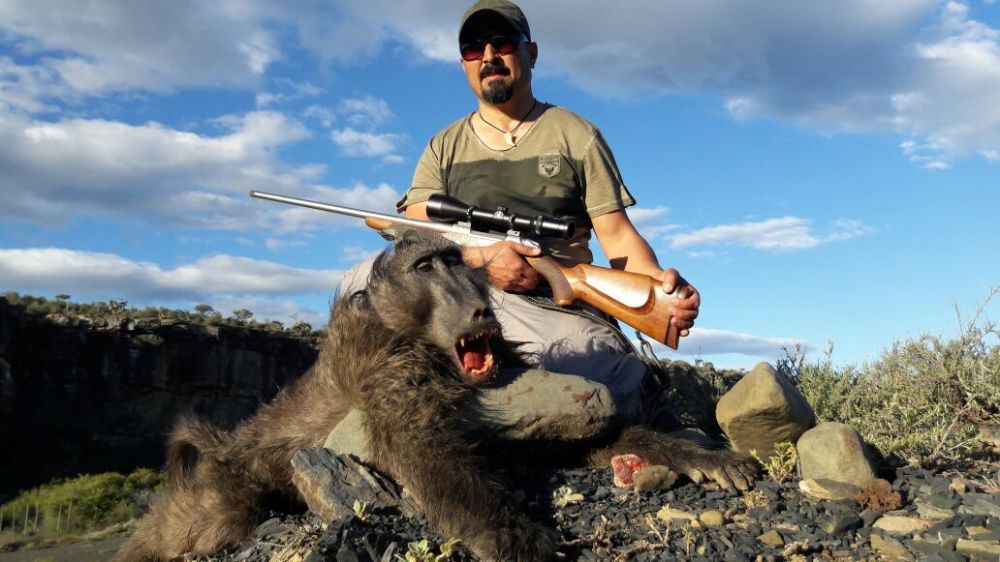Hunting Baboon in South Africa
Baboons can be very aggressive and would viciously counter-attack when threatened.
Baboon Characteristics
Scientific Name : Papio cynocephalus ursinus
Weight : 40 kg (m), 30 kg (f)
Shoulder Height : 1-1.5 m from head to tail
Breeding Season : Baboons do not have a definite breeding season
Minimum Rifle Calibre : 243
IDENTIFICATION: The Chacma Baboon is a large primate with a dog-like face and large, prominent canines. The male is a lot larger and tends to be more aggressive than the female. Baboons in Africa are categorized in different subspecies. The Chacma baboon found in South Africa is larger and darker, getting lighter in colour and size further up north.
HABITAT: Savannas; semi-desert grasslands and shrubs; forest edges to 10,000’ (3000m) or higher. Requires water and tall trees or cliffs as night roosts.
BREEDING: Baboons do not have a definite breeding season and are sexually active throughout the year. 1 (rarely 2) young are born after a gestation period of about 6 months (140 days). Young are initially carried beneath females and later on their backs.
DIET: Baboons are omnivorous, under natural conditions they feed on wild fruits, seeds and insects, even scorpions, and on occasion even the flesh of small mammals and birds. Because troops are inclined to raid commercial crops, baboons are not popular with maize and fruit farmers.
CHARACTERISTICS: Chacma baboons are preyed upon by Leopard and Cheetah. Baboons can be very aggressive. It is a known fact that they would viciously counter-attack their predators when threatened. Troops normal have 50 to 100 baboons, and have a well-developed and complex social structure.






